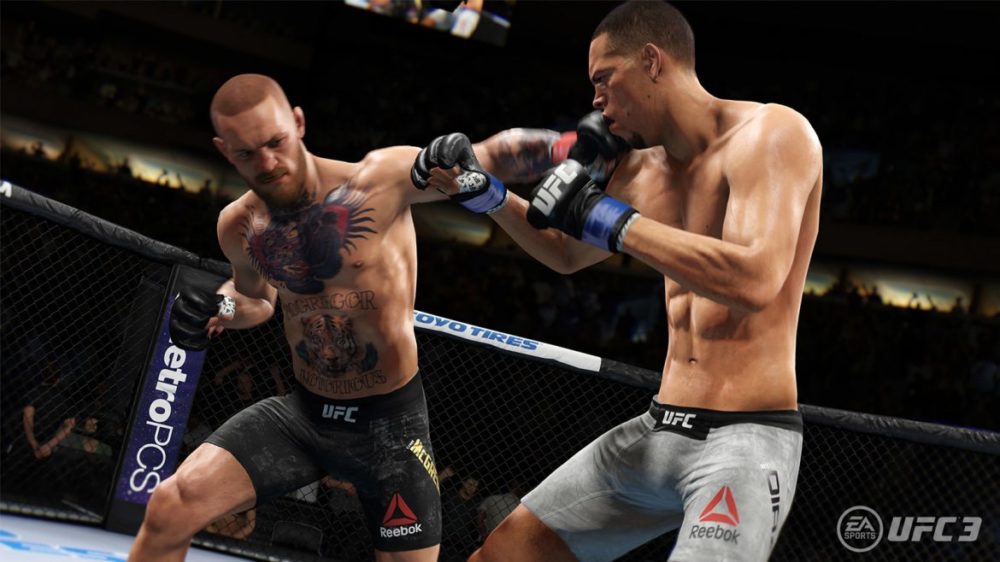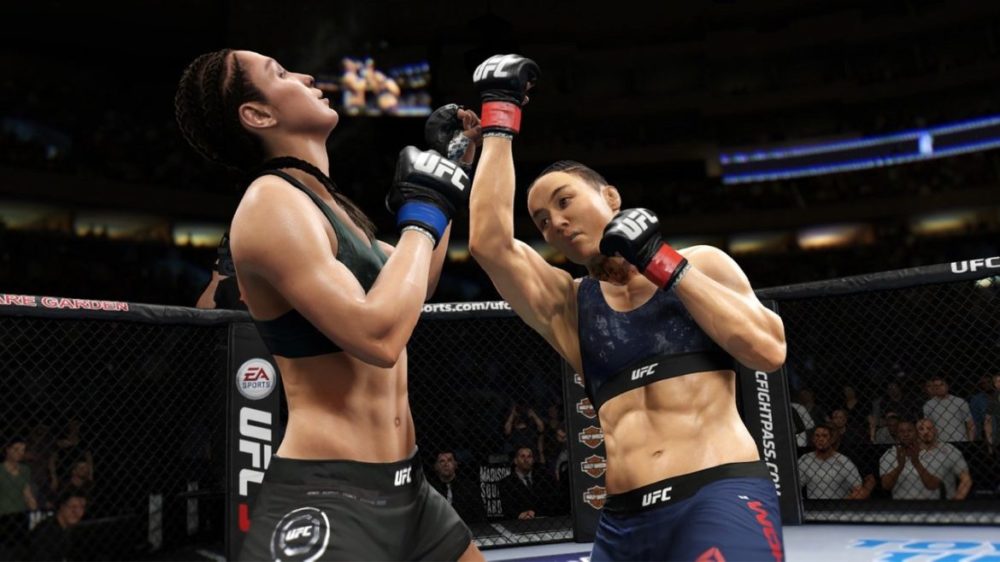TL;DR
EA's UFC 3 delivers stunning graphics and realistic animations, truly capturing the feel of a televised fight with an impressive roster of 234 fighters, including Bruce Lee. While presentation is top-notch, the game struggles with onboarding new players due to a lacking tutorial and complex mechanics, especially in ground combat, which can lead to frustration. Monetization, particularly in the Ultimate Team mode, leans heavily towards pay-to-win, which feels out of place for a full-priced title. For hardcore MMA fans, UFC 3 is a deep and rewarding experience, but casual players might find its complexity and monetization off-putting. Discover if the pros outweigh the cons for you by diving into the full review!
(See our video review of UFC 3 – with gameplay from the game – above!)
UFC – Ultimate Fighting Championship – has evolved from a niche sport for full-contact enthusiasts into a mainstream phenomenon. The presence of a world-ranked Swedish competitor (Alexander “The Mauler” Gustafsson) undoubtedly contributes to its popularity. However, the increasing television exposure of this modern gladiatorial contest also raises questions about its appropriateness for public viewing, particularly in environments where alcohol consumption might lead to undesirable outcomes.
EA’s investment in the sport as a gaming franchise has proven successful, although not to the same extent as flagship titles like FIFA and NHL. However, UFC 3 enjoys greater popularity in Western markets than NBA and Madden (American football). In terms of presentation, UFC 3 sets a new standard. The graphics and sound are exceptional, creating the initial impression of a genuine televised match. Animations are remarkably realistic, and the game features a comprehensive roster of 234 MMA fighters to unlock, including Bruce Lee (who notably participated in and won tournaments in Asia). The commentary feels authentic and complements the overall experience. In summary, the presentation and content are of the highest quality.
However, EA’s implementation falters with the in-game documentation and tutorial, which are essential for onboarding new players. While the aspiration to simulate the intricacies of the sport is commendable, it is imperative to educate players about the ruleset (which is not universally understood) and the gameplay mechanics. UFC 3 would benefit from a simplified “arcade mode,” enabling players to engage in more casual combat (reminiscent of Street Fighter or Tekken). As it stands, the initial excitement can quickly give way to frustration when fighters become entangled in ground positions, requiring players to execute timing-based maneuvers that often devolve into guesswork. While the game ostensibly includes a tutorial section, it was listed as “coming soon” during our testing phase at release, hindering our ability to evaluate its effectiveness. Furthermore, EA’s established monetization practices are evident, potentially contributing to the company’s reputation as a heavily criticized publisher. The Ultimate Team mode leans toward a pay-to-win model, and the inclusion of microtransactions feels inappropriate in a full-price game, where they should ideally be limited to cosmetic enhancements and remain entirely optional.
For dedicated MMA enthusiasts, UFC 3 represents a compelling choice, offering a realistic, stylish, and content-rich experience. Conversely, players with limited knowledge of or interest in MMA may find UFC 3 to be somewhat inaccessible and overly complex. Unlike more approachable titles such as FIFA and NHL, UFC 3 demands a degree of understanding and technical proficiency. However, those who persevere past this initial learning curve will discover a game with significant potential.
https://youtu.be/AiwpUtdmW-0



